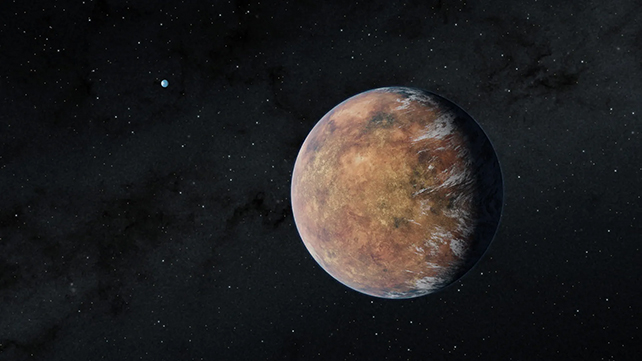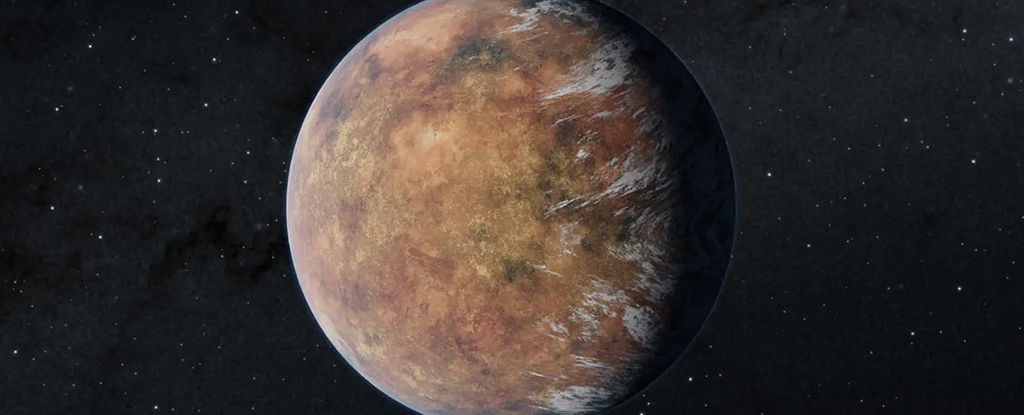Products You May Like
When it comes to finding life outside of our Solar System, planets that closely resemble Earth seem like a good place to start. We can now welcome celestial object TOI 700 e to that group of promising leads.
TOI 700 e has been confirmed orbiting inside the habitable zone of its star, TOI 700. That’s the region of space where significant quantities of water on its surface would be at a temperature suitable for a liquid form. Too warm for a blanket of ice, yet still cool enough for vapor to condense, these kinds of planets are considered ‘just right’ for life as we know it.
We can thank NASA’s Transiting Exoplanet Survey Satellite, or TESS, for finding TOI 700 e, and for giving it its name (TOI means TESS Object of Interest). It’s the second planet in the habitable zone in this system, joining TOI 700 d that was spotted in 2020.

“This is one of only a few systems with multiple, small, habitable-zone planets that we know of,” says planetary scientist Emily Gilbert, from the NASA Jet Propulsion Laboratory (JPL) in California.
“That makes the TOI 700 system an exciting prospect for additional follow up. Planet e is about 10 percent smaller than planet d, so the system also shows how additional TESS observations help us find smaller and smaller worlds.”
TOI 700 is a small, cool star (known as an M dwarf star), located around 100 light-years away from us in the Dorado constellation. These stars are nowhere near as big or as hot as our own Sun, so planets need to be closer to them for conditions to be warm enough for water to avoid freezing.
As for TOI 700 e, it’s believed to be 95 percent the size of Earth and mainly rocky. It sits in the ‘optimistic’ habitable zone – a zone where water may have existed at some point in time. TOI 700 d is in the narrower ‘conservative’ habitable zone, which is where astronomers think liquid water might exist for the majority of a planet’s existence.
Telescopes see these exoplanets (planets outside our Solar System) as regular blips in the light of their parent stars as they pass in front of it, in what’s known as a transit. With more surface blocking the star’s light, larger planets present easier opportunities to be seen than small, rocky worlds, making Earth-like discoveries like this one a rare treat.
TOI 700 e takes 28 days to do a single orbit, whereas TOI 700 d – which is a little further out than its neighbor – takes 37 days. As TOI 700 e is smaller than TOI 700 d, it took more data to confirm the silhouette really did represent a new planet.
“If the star was a little closer or the planet a little bigger, we might have been able to spot TOI 700 e in the first year of TESS data,” says astrophysicist Ben Hord from the University of Maryland. “But the signal was so faint that we needed the additional year of transit observations to identify it.”
TESS is monitoring around 100 million stars, and so any way we can find to narrow down the search for life is going to be useful. Finding exoplanets in their respective habitable zones is one of the best ways we’ve got of doing that.
Both TOI 700 e and TOI 700 d are thought to be tidally locked: in other words, one side of the planet is always facing its star (in the same way that the same side of the Moon is always visible from Earth). Having one side of a planet constantly baking in the sunlight does reduce the likelihood of complex life getting off to a smooth start, admittedly.
Even if these ‘just right’ planets aren’t exactly perfect for life, they do tell us a thing or two about finding solar systems that might be better suited for it. By studying star systems like the one we’re in, astronomers can also better understand the evolution of our home and how neighboring planets came to their current orbits.
“Even with more than 5,000 exoplanets discovered to date, TOI 700 e is a key example that we have a lot more to learn,” says astronomer Joey Rodriguez from Michigan State University.
The research has been accepted for publication in the Astrophysical Journal Letters, and is currently available to view on arXiv.
